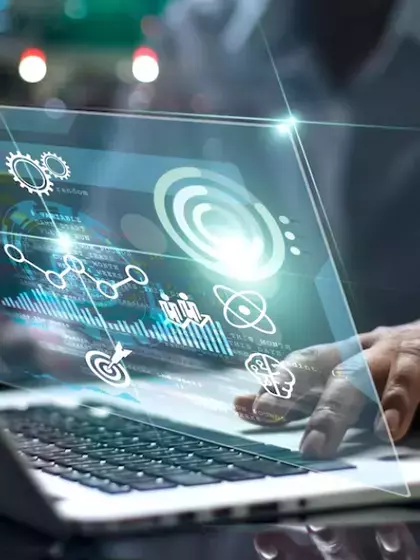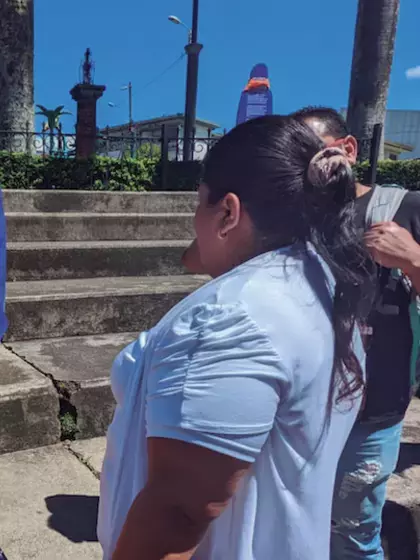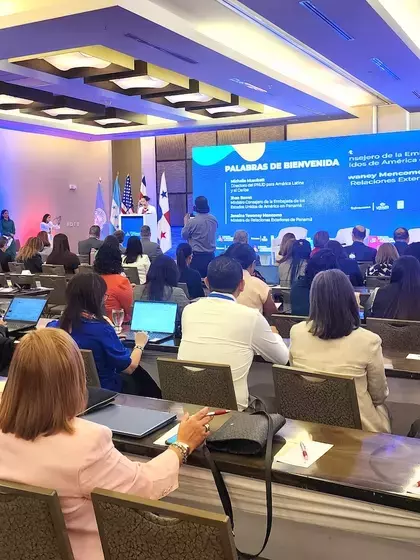Artificial intelligence, toward new horizons in the fight against gender-based violence

Preventive medicine, who hasn’t heard of it? This medical speciality aims to maintain or improve a population’s health through the prevention of future illness or its early detection. A cure in time saves nine, as the saying goes.
This same prevention-based approach can also be applied to citizen security policies and particularly to strategies and plans to fight violence against women and girls. Citizen security issues need people-centered solutions. A commitment to public policies with a strong emphasis on prevention and social investment combined with educating citizens in equality and respect makes for a more comprehensive approach to gender-based violence.
Technology plays a growing role in solving social problems. But, can an algorithm really help in the struggle to end violence against women and girls? It certainly can. Artificial Intelligence (AI), for instance, can identify areas where these cases are more prevalent, detecting obscure factors that contribute to violence, or providing victims with information, resources and guidance in real time through instant messaging platforms.
This is the case of the Sara chatbot, recently deployed by the InfoSegura Regional Project, an initiative of the United Nations Development Programme (UNDP) in collaboration with the United States Agency for International Development (USAID). Leveraging artificial intelligence, this AI Assistant instantly offers victims information, always under strict confidentiality.
The Sara chatbot provides 24/7 cost-free information and guidance to any woman who may be at risk of violence. This enables her to assess her situation, so she can turn to the government or civil society services in her country. Sara also provides emergency contact numbers for government institutions in Central America and the Dominican Republic.
Detecting hate speech and gender-based violence in social media
Using machine learning algorithms, AI systems are able to analyze behavior, social media help messages, or emergency phone calls for instance, detecting possible cases of gender-based violence.
What does this accomplish? This allows authorities to deploy early intervention and offer potential victims help, or it enables emergency services to identify and give priority to cases of violence against women, ensuring the response is more efficient and effective.
A good example of an application of this technology in the region is eMonitor+ created by the UNDP and implemented in Peru for the first time in America, automatically and massively identifying hate speech and gender-based violence in political discussions online. (LINK )
Preventing revictimization
Safeguarding victim privacy and safety is one of the pillars in the fight against gender-based violence and revictimization. AI algorithms can help detect and eliminate offensive, abusive or threatening content on social media or other online platforms. This helps create safer online environments for women and reduces the risk of being revictimized by their aggressor or malicious users.
Justice departments can also find a powerful ally in artificial intelligence. For instance, by detecting and tracking protection or restraining orders in legal records and other data sources, AI can identify violations or non-enforcement of these orders. This expedites the authorities’ response and guarantees the necessary measures are taken to ensure victim safety.
A good example would be the tool developed in Brazil that helps judges responsible for female homicide cases. Developed by the National Justice Council in partnership with the UNDP, the model is to be piloted in 2023 at the Justice Tribunal of Ceará in the northeast of the country.
Artificial intelligence has potential for enhancing approaches to gender-based violence, offering innovative solutions in prevention, detection and victim support. However, it is fundamental to keep in mind that AI is unable to replace human effort and the need for comprehensive policies, effective laws and awareness campaigns to get to the deep roots of violence against women and girls and make strides toward a safer and more equal society for all women.
Photography: Freepik





